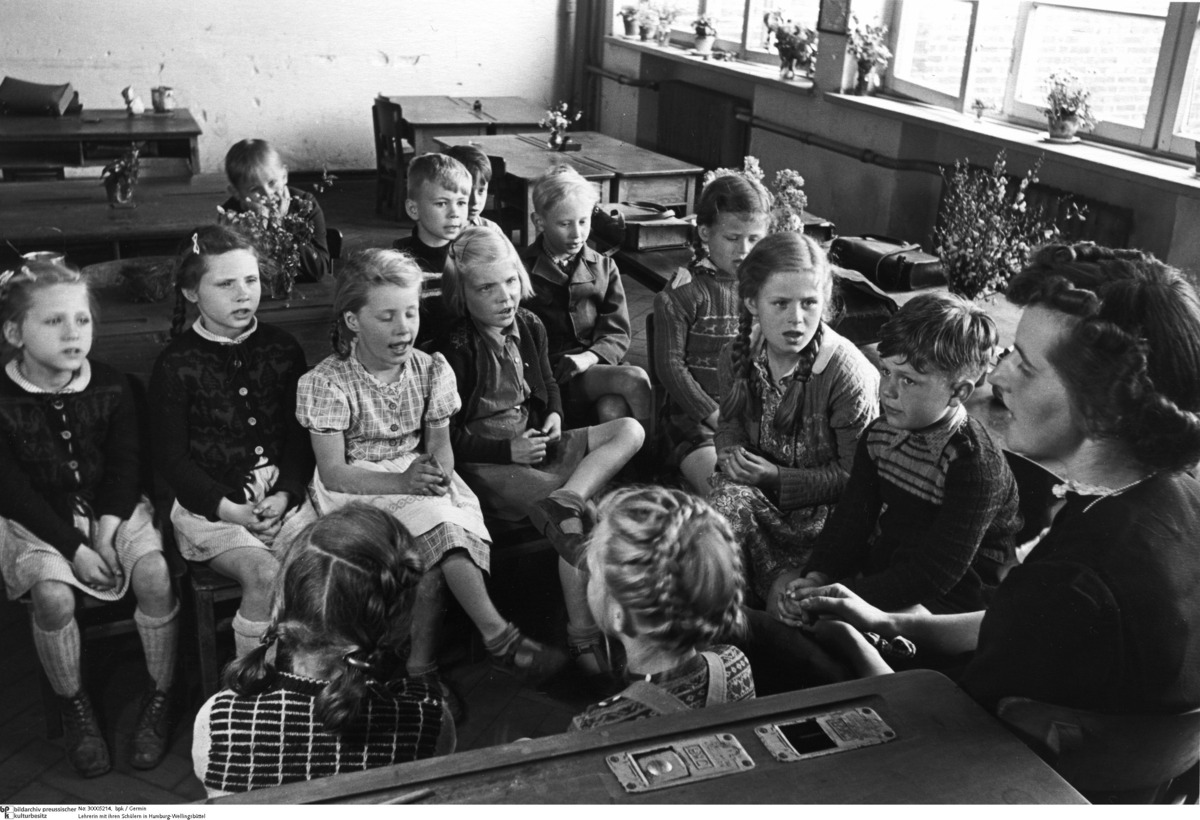Source

Source: Photo: Gerd Mingram [Germin].
bpk-Bildagentur, image
number 30005214. For rights inquiries, please contact Art Resource at
requests@artres.com (North America) or bpk-Bildagentur at
kontakt@bpk-bildagentur.de (for all other countries).
In the transitional period after the war, the Social Democrats, in particular, called for educational reforms to end the traditional educational privileges of the middle classes and to provide broader segments of the population with opportunities for social mobility. These reform projects included the six-year elementary school, which was designed to give students the chance to choose their educational track (e.g., either primary school [Volkschule] followed by middle school [Mittelschule/Realschule] or college-preparatory high school [Gymnaisum]) after the sixth grade instead of the fourth. In 1949, the introduction of the six-year elementary school was passed by the SPD majority in the Hamburg city parliament. In reaction, the Hamburg Bloc, which consisted of the CDU, the FDP, the German Party and the All-German Bloc/Federation of the Expelled and Disenfranchised, pledged to reintroduce the four-year elementary school during its 1953 electoral campaign for city parliament. However, after winning the election, these parties first appointed an independent committee of experts to evaluate the Hamburg school system. In late March 1957, the parliament decided without debate to abolish the six-year elementary school. It did not change these plans even after the SPD won the city parliamentary elections in November 1957.

Source: Photo: Gerd Mingram [Germin].
bpk-Bildagentur, image
number 30005214. For rights inquiries, please contact Art Resource at
requests@artres.com (North America) or bpk-Bildagentur at
kontakt@bpk-bildagentur.de (for all other countries).
© bpk / Gerd Mingram [Germin]